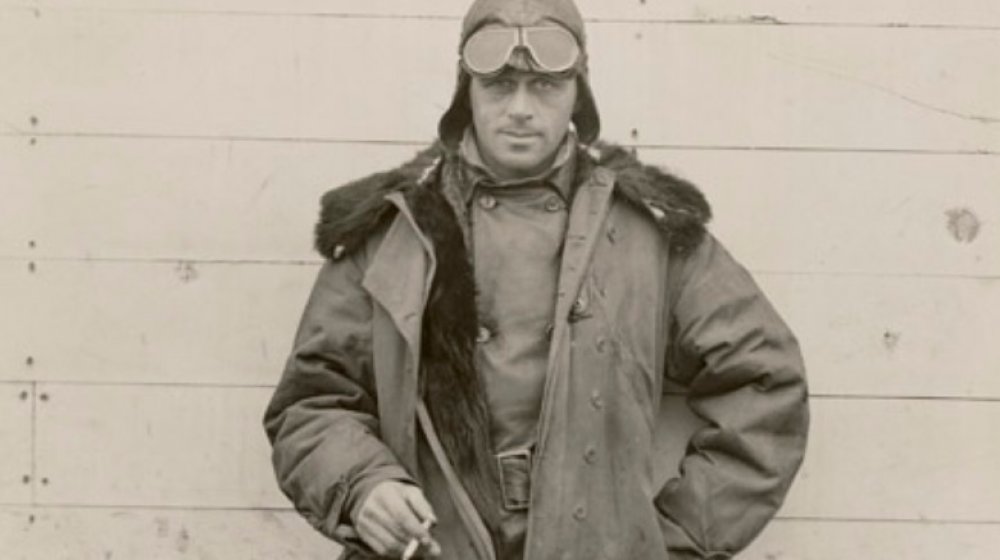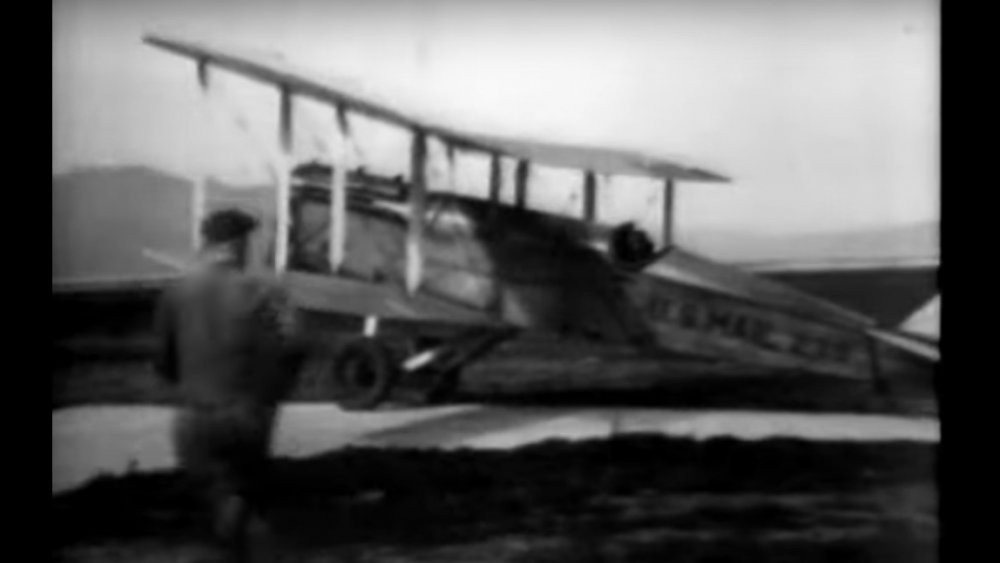Who Was Famous Airmail Pilot Wild Bill Hopson?
The popular perception of mail carriers ebbs and flows. We talk about the mail being delivered no matter what — "Neither snow nor rain nor heat nor gloom of night stays these couriers from the swift completion of their appointed rounds," according to the words engraved across the 8th Avenue Post Office in New York City — and that's pretty impressive, especially since it's true. But there was a time when some mail carriers were romantic, dashing, daring figures — the early airmail pilots. As Jim Kerschner told Smithsonian's Air and Space Magazine, "You can't conceive how exciting it was. ... In my six-year-old mind those pilots were gods. I never had the audacity to speak to them." And none was more dashing and bordering on the divine than William "Wild Bill" Hopson.
By profession, at least at first, Hopson was a New York City cab driver, says the Smithsonian's Postal Museum. Pretty daring in and of itself. What he really loved was flying, and airmail pilots were peacetime daredevils. Remember that airplanes in those days weren't awfully well built or even particularly safe. The cockpits were still open. Navigation was by "iron compass" — following railroad tracks. Radios were an afterthought. History Net quotes one survivor, who called the pilots "a suicide club": "Only pilots desperate to fly would join it," although "you could at least be comfortable while life lasted."
There were no guarantees
The Post Office initiated airmail flights in 1918. More than 200 pilots flew for the Air Mail Service. Of those, 35 died in crashes; of those, 20 died before 1920, the year Hopson signed on. Besides being a pilot, the men also had to work mechanical miracles, sometimes landing to repair the plane, then take off again. Hopson was no exception. The Postal Museum reports that Hopson made 13 (at least) forced landings in 1926 alone. The National Archives reports that Hopson once landed upside-down in a cornfield (and survived). Sometimes it was weather. Sometimes it was the plane. "The best system of flying bad weather is not so much to go rip roaring through nasty weather, but to use your head for something else besides a hat-rack, and fly where bad weather ain't," he wrote, according to the United States Postal Service.
Hopson was known to set speed records for delivery, which earned him that "Wild Bill" nickname (though survival might have had something to do with it, too). The man loved to fly, and when the USPS moved airmail to private contractors in 1927, Hopson moved, too. He had been flying on behalf of National Air Transport for about a year when his plane hit a tree on a Pennsylvania hill nose-first during a storm. Hopson died instantly, age 38.

